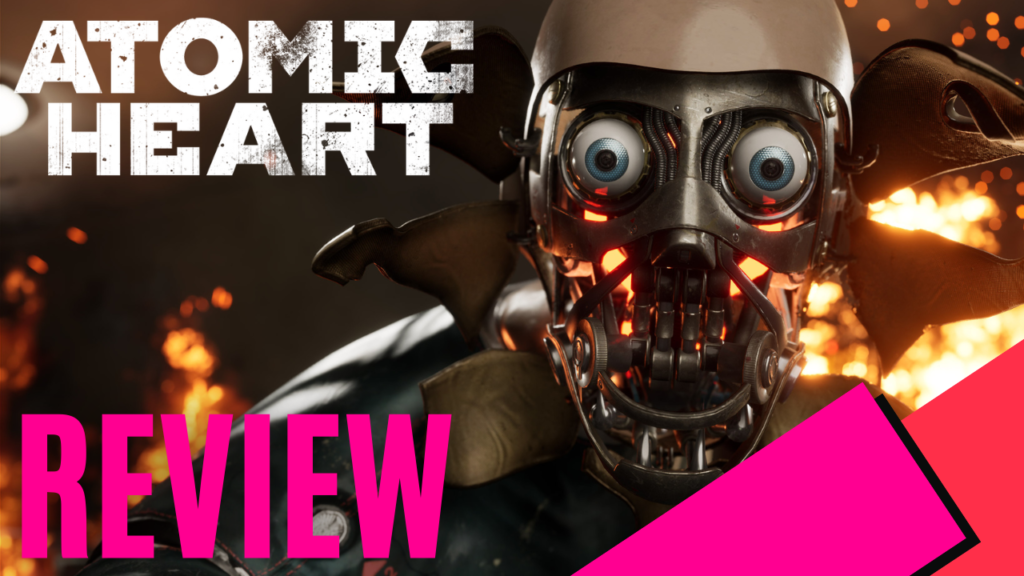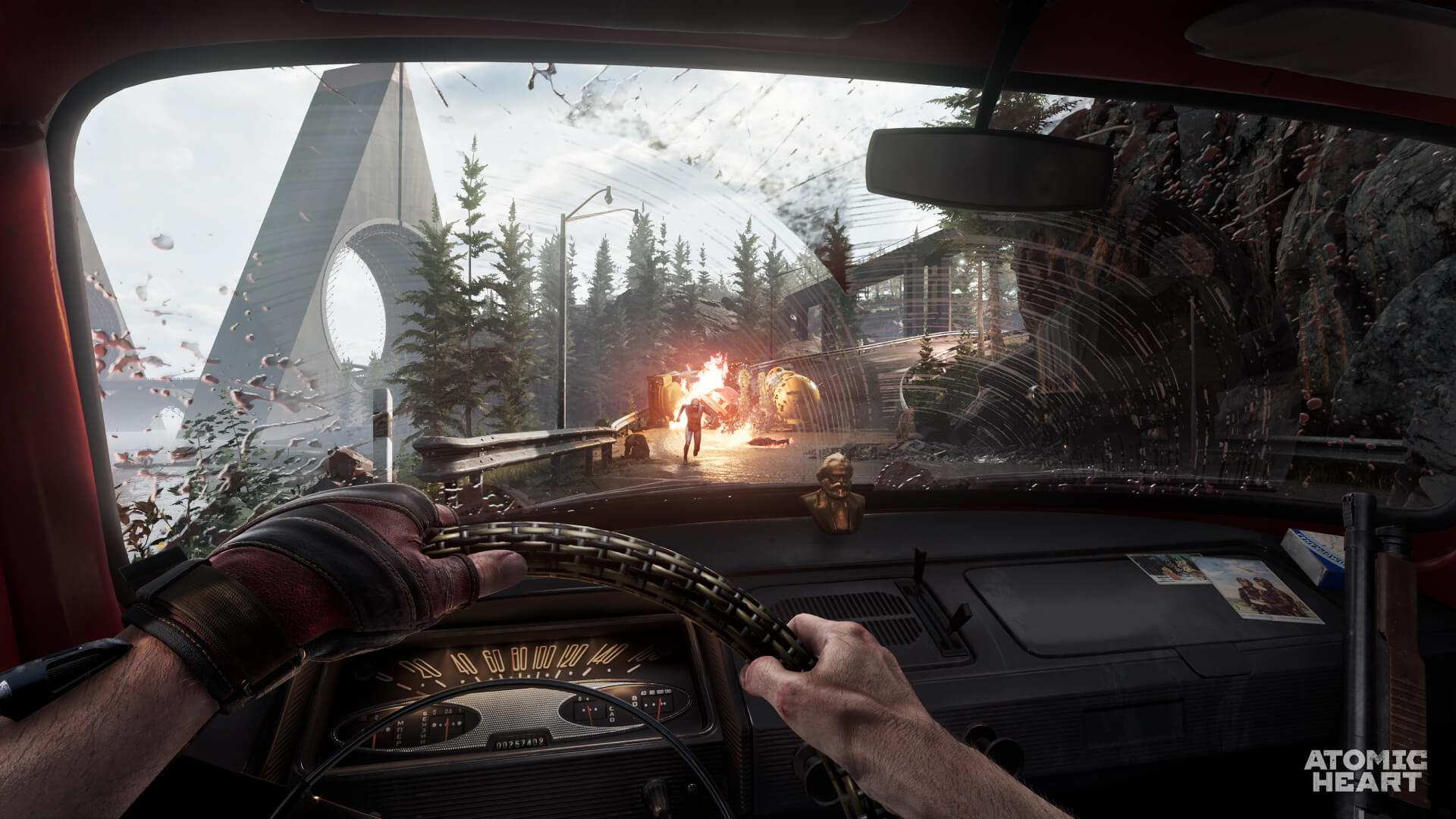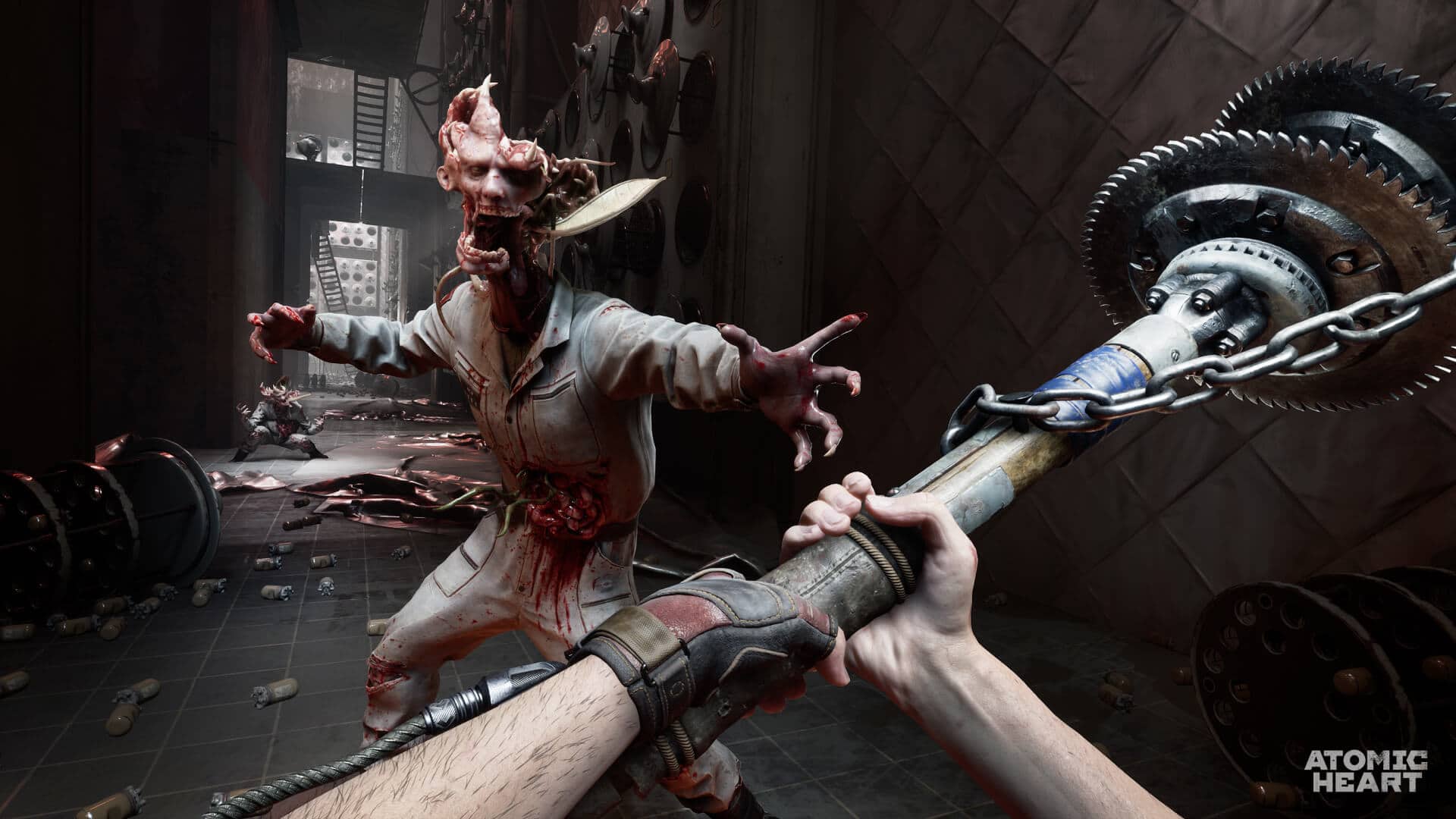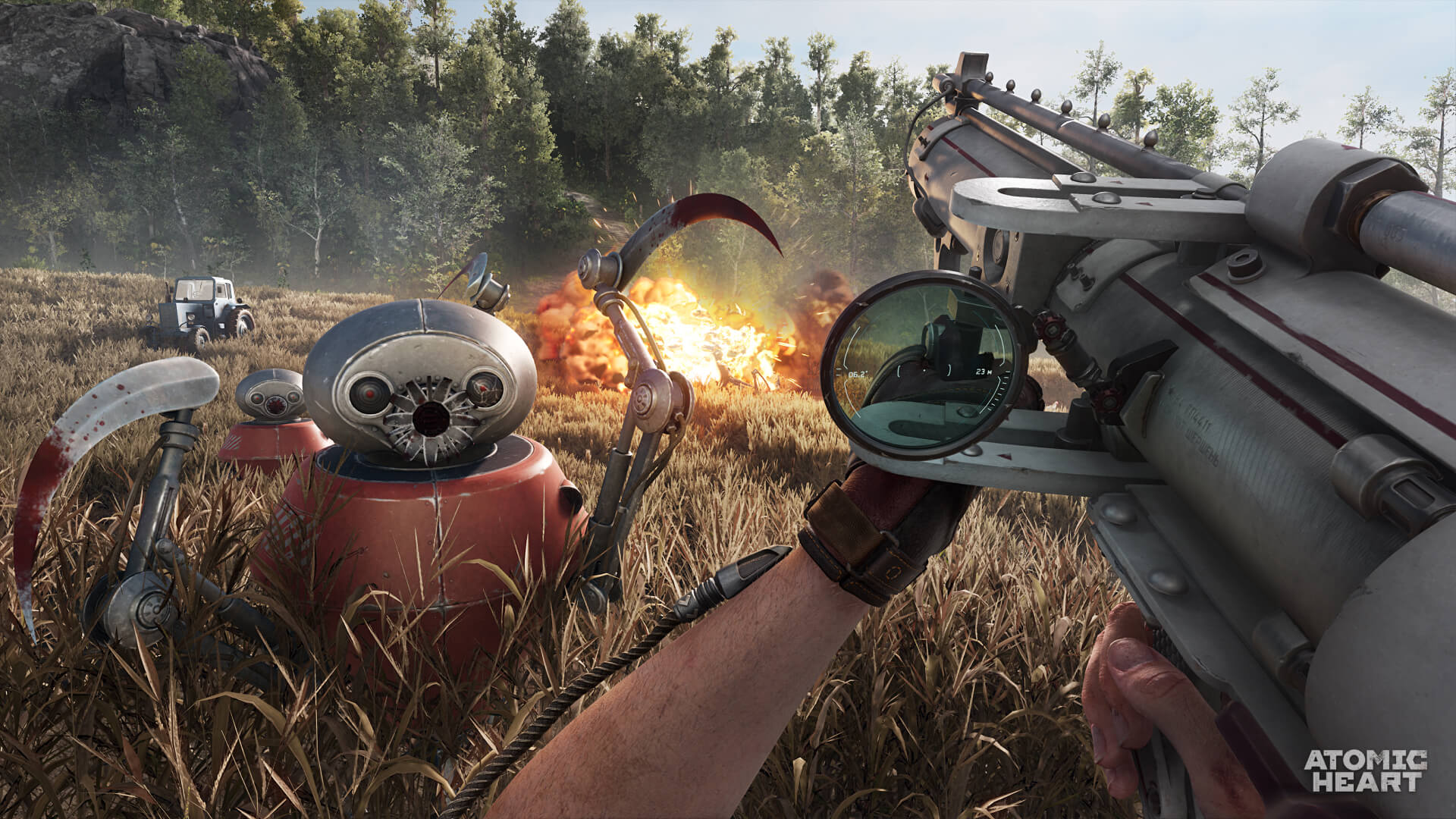
If there is one game that I’ve had my eye on since it was first announced, it would have to be Atomic Heart by the folks over at Mundfish.
With a very Bioshock feel to it, Atomic Heart is set in an alternate vision of the USSR where a scientist named Dmitry Sechenov successfully starts a robotic revolution in the 1930s. Fast forward to the 1950s, the workforce has completely been replaced by robots controlled through a network called, “Kollective 1.0”.
The game kicks off a few years after this, but just prior to Dmitry Sechenov unveiling “Kollectiv 2.0” to the public. Kollective 2.0 allows humans to have equal access to the network allowing them to remotely control the robots through a “Thought Device” that is wired directly into their brains. What could go wrong, right? Well, everything.
You play as Major P-3, a Soviet intelligence agent who has been assigned to go and investigate a disturbance at “Facility 3826”, a Soviet Union scientific research hub. On your way, a killer robot attacks your vehicle and causes you to crash, only to be surrounded by more out-of-control robots, but you aren’t alone.

To help you along the way, you wear a sentient glove named CHAR-les. Other than weapons, CHAR-les also blesses you with a host of Polymer abilities such as Frostbite, Telekinesis, or a Polymeric Shield, all of which can be upgraded via a very “randy” vending machine. We’ll explain that one a little later. CHAR-les can also help you scan the environment and allow you to see any enemies in the area, as well as any lootable boxes or draws that will contain resources you suck up with your glove. These resources can then be used to craft weapons and ammo or purchase the aforementioned upgrades.
Atomic Heart has a great variety of blood-thirsty robots, especially the freaky Lab Tech bots with little moustaches. At the beginning of your playthrough, these don’t seem too bad, but as you progress, they start gaining some new abilities that make it a little harder to take them down. Pretty much any robot that was used to replace jobs is now your enemy, such as the “Laborer” bots built for logging, or even the “Doc” bots designed to carry out surgeries. They are all a threat now and can be a pain to take down.
Spread out in the open world sections, or up on walls within each area you’ll explore are “Dandelions” CCTV cameras. They were originally designed for transport management but are now used by the robots for their own surveillance. If you are caught by one of these, very quickly a fleet of deadly robots swam to your location, resulting in nothing but you trying to survive and burning through precious ammo in the process. You’re able to shoot these down and move past them, but “Pchela” bots are soon deployed to repair any damaged object, and yep, you guessed it, even the robots you’ve just used all your ammo on to take out can be repaired by these bots.

As for weapons, and besides your fancy glove, you can craft a variety using the resources you’ve collected at “NORA’, your sex-crazed vending machine. While you start off with an axe, you can craft a few more melee weapons and a handful of guns, such as a Pistol, a Railgun, an AK-47, and a rocket launcher called “Fat Boy”.
Guns can be upgraded with different Handles, Barrels, Magazines, and Aiming Devices, while melee weapons can be upgraded with different Blades and Grips. Each of these items can also be upgraded, giving them more damage, attack speed, or other little bonuses. Obviously, upgrading something like your magazine over and over will improve how much ammo you can hold, or upgrading the likes of your gun barrel will increase its damage, aiming speed, or rate of fire.
In order to craft these weapons, though, you’ll need to find their blueprint, which can be found by looting larger boxes as you play. Some of the blueprints for some of the rarer weapons can only be found in some of the side quests, so it’s worth going off the beaten track and completing some of these.
You’ll also find yourself crafting ALOT of ammo due to how much ammo the robots and bosses actually take to bring down. You’ll always have your melee weapons, and to be honest, a lot of the time, that is all you need. Speaking of boss fights, they are tense and look very impressive. All the music within these huge battles is produced by the one and only Mick Gordan, which only amplifies the tension in the battles even further.

Puzzles play a big part in Atomic Heart, and there are a lot of them. While they are re-used through your playthrough, they are switched up a fair bit so it doesn’t feel like you’re doing the same ones every time. Locks are picked by clicking your fingers to the beat of the lights, other locks require a key you’ll need to go find before you can proceed, and some puzzles require you to solve them to turn the power back on.
At first, the puzzles that required me to turn the power on made zero sense to me, and I was left just turning discs around until it all landed in place. As you play, and the more you do, you start to work it out. Other sections had you interacting with a panel that turned part of the level around, and you then had to platform your way through it to progress. I think the game’s weakest point was its platforming sections. They just felt a little out of place and tacked on, but thankfully, there aren’t too many sections where this is required.
In the end, I really enjoyed my time with Atomic Heart. It’s definitely one of the strangest games I’ve played in recent memory. Mundfish has done an amazing job at capturing that 1950s setting with gameplay that is jam-packed with some intense battles against robots that would put the Terminator to shame.
Atomic Heart is out now on PC, PlayStation 4|5, Xbox One, Xbox Series X|S, and best of all, free on Game Pass for Xbox and PC.

The Good
- Combat is satisfying
- Art direction is beautiful
- Plenty of fun puzzles
- Slapping soundtrack
- Perverted vending machine
- Plenty of upgrading options
The Bad
- Platforming is a little uninspiring
- Enemies are a little bullet spongy








